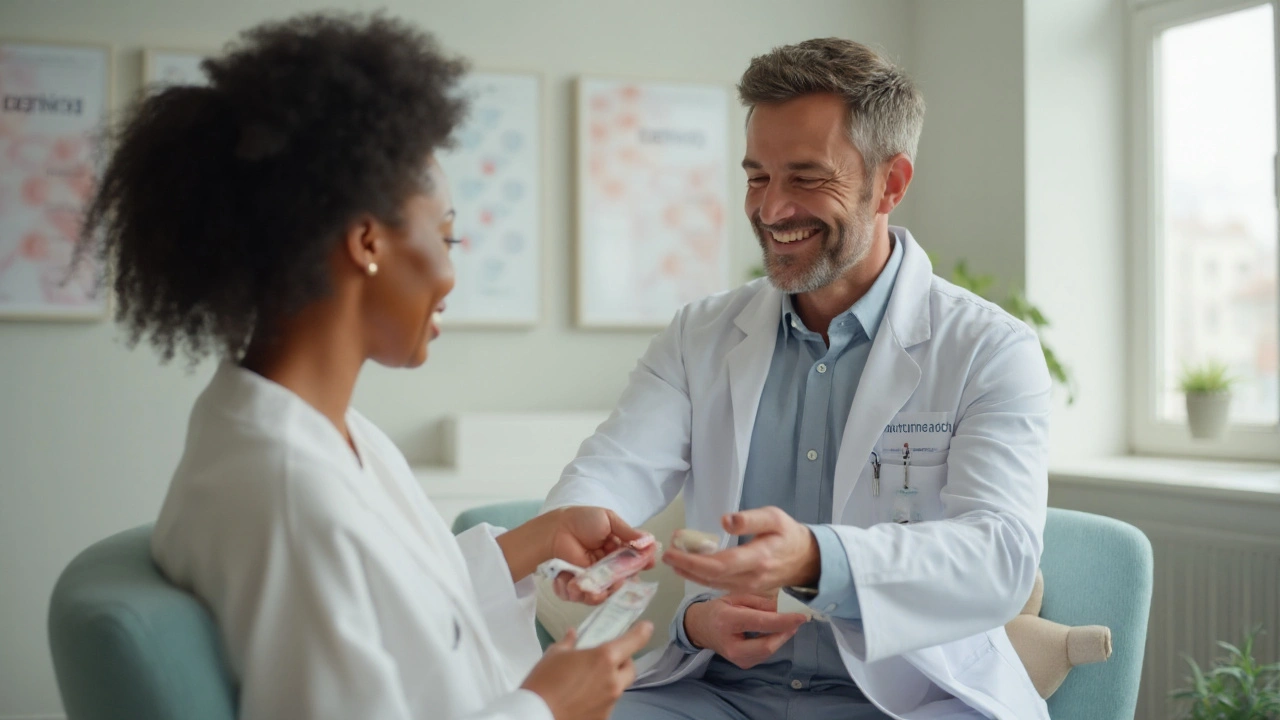Acne Treatment Guides: Quick, Real‑World Tips to Clear Your Skin
If you’re fed up with stubborn pimples, you’re not alone. Acne can feel like a never‑ending battle, but the good news is that you don’t need a PhD to get results. Below you’ll find straightforward advice that you can start using today, plus links to deeper articles on each topic.
Top Over‑the‑Counter Options
First stop: the drugstore aisle. Look for products that contain benzoyl peroxide (2‑5%) or salicylic acid (0.5‑2%). Benzoyl peroxide kills the bacteria that make acne flare, while salicylic acid unclogs pores by dissolving excess oil. Apply a thin layer once or twice a day—more isn’t better and can irritate your skin.
For oily or mixed skin, a gentle foaming cleanser with 1% salicylic acid works well in the morning. In the evening, swap to a lightweight moisturizer that won’t block pores. Many brands now offer “non‑comedogenic” labels; trust those, they’re designed to stay clear of the pores.
If you’re dealing with inflammatory lesions (red, painful bumps), a spot treatment with a higher concentration of benzoyl peroxide (up to 10%) can shrink them overnight. Just dab a tiny dot on the spot and let it dry before your night cream.
Lifestyle Changes That Make a Difference
What you eat matters more than most people think. High‑glycemic foods—white bread, sugary drinks, and fast‑food fries—spike insulin and can worsen acne. Try swapping those for whole grains, lean protein, and plenty of veggies. A few weeks of balanced meals often translates into fewer breakouts.
Stress is another silent trigger. When you’re stressed, your body releases cortisol, which can increase oil production. Simple habits like a 5‑minute breathing exercise, a short walk, or a quick yoga routine can keep cortisol levels in check and give your skin a break.
Don’t forget hygiene. Changing pillowcases every three days, washing your face after sweaty workouts, and keeping phones clean (they’re a magnet for bacteria) are cheap tricks that pay off.
Lastly, be patient. Most acne treatments need 4‑8 weeks to show real change. If you’ve tried over‑the‑counter products for a month without improvement, it might be time to chat with a dermatologist. Prescription options like topical retinoids or oral antibiotics can provide that extra push.
Ready to start? Pick one new habit from the list—whether it’s a new cleanser, a dietary tweak, or a quick stress‑relief routine—and stick with it for at least a month. You’ll likely notice clearer skin and a boost in confidence.
For deep dives on specific products, dosage tips, or how to combine treatments safely, check out the articles linked below. Each post on this tag page is written to give you clear, practical steps without the medical jargon.
Remember, acne is a common skin issue, not a personal failure. With the right tools and a bit of consistency, you can get the clear skin you’ve been looking for.

